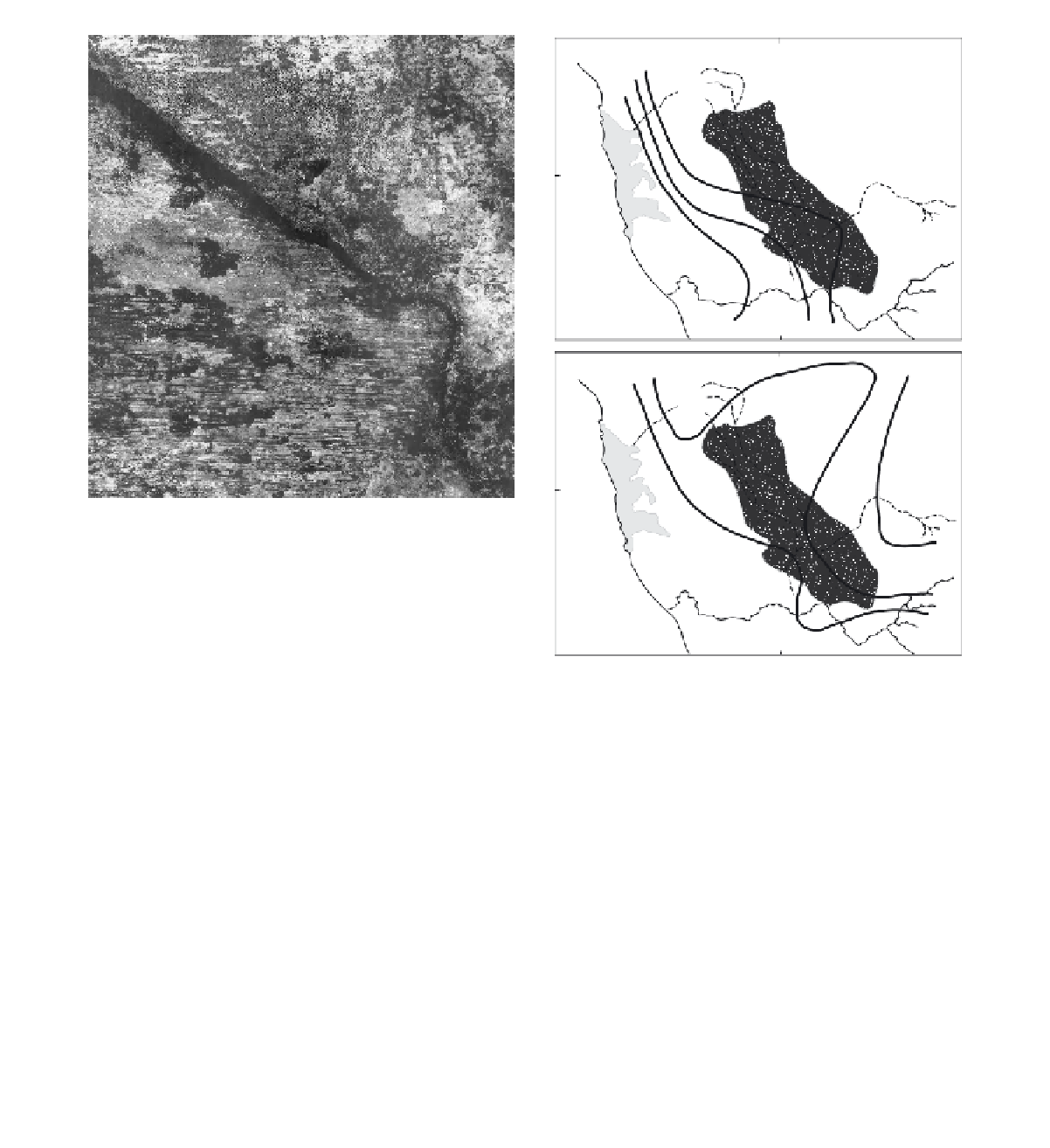Geoscience Reference
In-Depth Information
(a)
20°E
50
100
200
Southwestern
Kalahari dunes
Namib
sand
sea
25°S
200
100
50
(b)
50
200
100
Figure 17.12
Landsat image (5 August 1973) of part of
southwestern Zambia, southeastern Angola and the Caprivi
Strip, Namibia. Vegetation contrasts between the crests of fixed
dune ridges and interdune areas allow the identification of an-
cient dune systems in the area covered by the left half of the
image.
50
100
200
Figure 17.13
Suggested spatial variations in the distribu-
tion of dune mobility index
M
values between today and the
last Glacial Maximum, in the southwestern Kalahari, according
to Lancaster (1988).
M
=
W
/(P/PE) where
W
is the % time
wind exceeds the threshold velocity for sand transport and
P/PE is the ratio of annual precipitation to annual potential
evapotranspiration. Index values are interpreted in terms of
M
>
200
=
dunefield fully active; 100-200
=
dune plinths and
interdunes vegetated; 50-100
=
dune crests only active and
<
50
=
dunes inactive.
dunes have been subjected to eluviation (Smith, 1963),
pedogenesis and calcification, resulting from an increase
in available moisture and reduction in aeolian activity
(Allchin, Goudie, and Hegde, 1978). The nature of post-
depositional dune degradation may, however, complicate
the subsequent interpretation of the resultant forms, as
well as the dating of phases of accumulation (Munyikwa,
2005; McFarlane
et al.
, 2005).
The presence of dune surface vegetation is perhaps the
most widely used indicator of fixed dune status, but needs
careful interpretation as an indicator of inactivity. This
is especially so for sand seas composed of linear dunes,
which are in any case relatively immobile forms compared
to transverse forms (Thomas and Shaw, 1991a) and which
may widely support an element of plant cover even under
arid conditions (Tsoar and Moller, 1985). While there can
be little dispute that dunefields covered by dense wood-
land are inactive, it is not so clear in the case of sparsely or
partially vegetated dunes (Hesse and Simpson, 2006). In
present arid environments, there is not a distinct threshold
between aeolian activity and inactivity, but rather different
levels of activity (Livingstone and Thomas, 1993; Mason
et al.
, 2008) and a gradual decline in sand movement in
the direction of increasing vegetation density (Ash and
Wasson, 1983; Wiggs
et al.
, 1995). Depending on wind
velocities, significant sand transport may occur where up
to 35 % of the ground surface is plant-covered - a situation
that occurs in several dunefields, which have been desig-
nated fixed or inactive, e.g. the southwestern Kalahari and
parts of the Australian and Indian sand seas. Some au-
thors have concluded that present-day dune inactivity is
not necessarily a function of increased effective precipi-
tation but may be due to a decline in windiness (Ash and


